March 5, 1996 02:29 PM | Permalink | ![]()
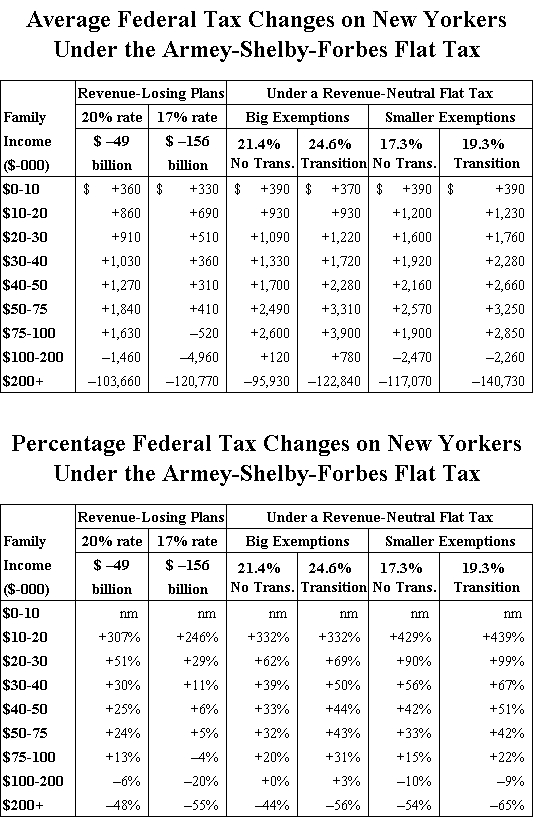
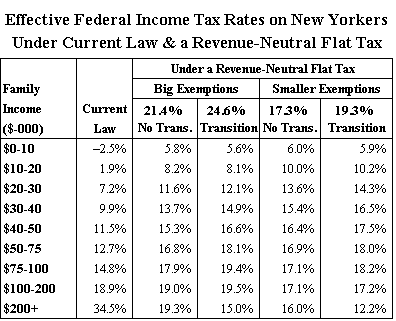
NOTES:
- Current law figures include personal and corporate income taxes, estate & gift taxes and taxes on fiduciaries, all of which would be repealed under the flat tax. Negative current personal income tax in the lowest income group under current law reflects the earned-income tax credit, which would be repealed under the flat tax legislation.
- The revenue-neutral plans are shown with and without transition rules. In fact, there would undoubtably be either substantial transition rules (none are proposed in the flat-tax bill) or substantial corporate merger and leasing activities to reach the same result.
- The reduced wage-tax exemptions reflected in the two “smaller exemption” plans allow $5,100 per taxpayer and $2,400 per dependent, rather than the $10,700 per taxpayer and $5,000 per dependent proposed in the revenue-losing flat tax bill.
- Proposed flat taxes on fringe benefits (collected from public, private and non-profit employers) are assigned to workers. Other “business” taxes under the transition-free flat tax plan are based on optimistic estimates by the U.S. Treasury. Likely transition rules would reduce business tax revenues very substantially.
Source: Citizens for Tax Justice, March 5, 1996
Average Federal Income Taxes on New Yorkers Under Current Law & Armey-Shelby-Forbes Flat Tax
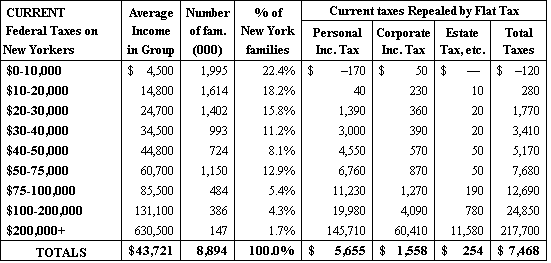
REVENUE-LOSING PROPOSALS:
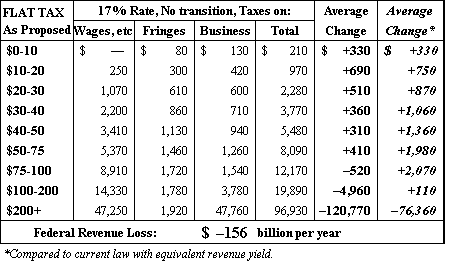
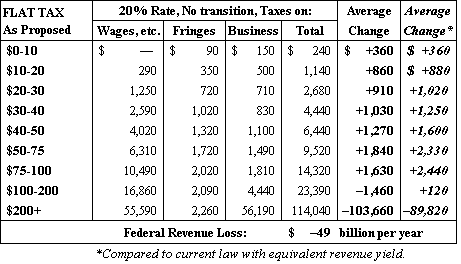
REVENUE-NEUTRAL SCENARIOS
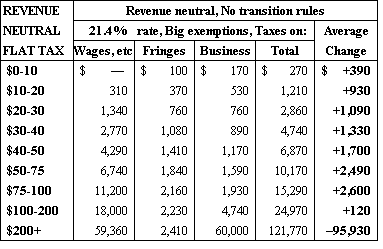
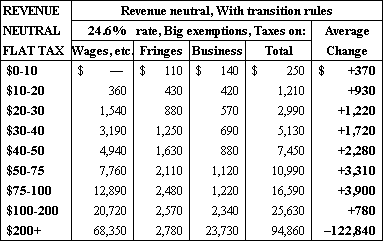
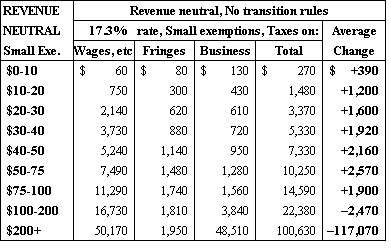
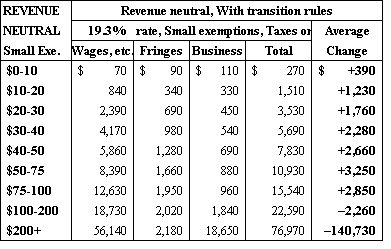
NOTES: Current law figures include personal and corporate income taxes, estate & gift taxes and taxes on fiduciaries, all of which would be repealed under the flat tax. Negative current personal income tax in the lowest income group under current law reflects the earned-income tax credit, which would be repealed under the flat tax legislation. Figures for the flat tax as proposed, with a two-year 20% tax rate and later a 17% tax rate, assume no transition rules and no steps by corporations to avoid taxes by merging with companies with negative taxable incomes (e.g., banks). Changes for the revenue-losing versions of the flat tax (*) are compared to current law raising equivalently lower revenues. The revenue-neutral plans are shown with and without transition rules. In fact, there would undoubtably be either substantial transition rules (none are proposed in the flat tax bill) or substantial corporate merger and leasing activities to reach the same result. The reduced wage-tax exemptions reflected the two “smaller exemptions” plans allow $5,100 per taxpayer and $2,400 per dependent, rather than the $10,700 per taxpayer and $5,000 per dependent proposed in the revenue-losing flat tax legislation. Proposed flat taxes on fringe benefits (collected from public, private and non-profit employers) are assigned to workers. Other “business” taxes under the transition-free flat tax plan are based on optimistic estimates by the U.S. Treasury. “Generous” transition rules, as suggested by the Kemp Commission, would reduce the business tax revenues very substantially. All tax figures are at 1996 levels, and are rounded to the nearest ten dollars. Source: Citizens for Tax Justice, March 5, 1996



